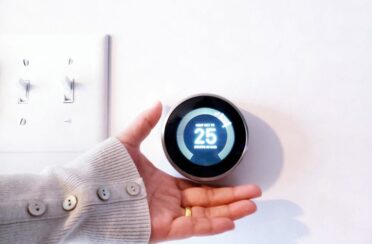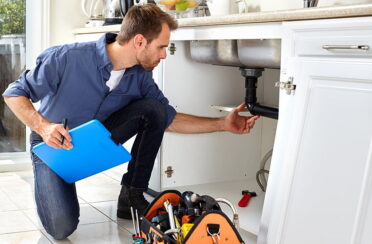 A heat recovery ventilator (HRV) solves the problem of poor ventilation in homes while also minimizing heat loss and heat gain. As homes have become more energy-efficient, airtight construction methods have all but eliminated fresh air infiltration from the outdoors. Consequently, indoor air quality often decreases from lack of ventilation. Airborne particulates, allergens, and fumes may accumulate to concentrations that can cause physical symptoms in susceptible individuals.
A heat recovery ventilator (HRV) solves the problem of poor ventilation in homes while also minimizing heat loss and heat gain. As homes have become more energy-efficient, airtight construction methods have all but eliminated fresh air infiltration from the outdoors. Consequently, indoor air quality often decreases from lack of ventilation. Airborne particulates, allergens, and fumes may accumulate to concentrations that can cause physical symptoms in susceptible individuals.
Balanced Ventilation
A heat recovery ventilator incorporates a central controller unit with separate intake and exhaust fans connected to dedicated, small-bore ductwork installed in your house. The exhaust ducts remove stale air from areas like the kitchen, bathroom, and utility rooms while intake ducts convey fresh, filtered outdoor air to bedrooms and family rooms. Because the intake and exhaust fans move air volume at precisely the same rate, neutral air balance inside the house (critical to optimum heating and cooling) is maintained.
Heat Recovery
Ventilating with fresh air in winter burdens your furnace with an influx of cold outdoor air. Heating costs climb while indoor comfort takes a hit. During summer, inducting hot outdoor air overworks your A/C, increasing electricity bills.
The central controller in an HRV integrates a heat exchanger that transfers heat from the warmer airstream to the cooler airstream. In winter, household heat in the outgoing exhaust stream is transferred to the incoming stream of cold, outdoor air to pre-warm it. In summer, heat extracted from incoming outdoor air is moved to the cooler outgoing exhaust stream to sustain indoor coolness. An HRV can typically transfer as much as 70 percent of the heat from one stream to the other.
Energy Efficiency
Utilizing ECM (electronically commutated motor) technology that “sips” electricity, most HRVs use less than 100 watts and high-efficiency units consume as little as 50 watts. Because your furnace and A/C aren’t impacted by excessive heat loss or heat gain, monthly bills are also lower.
For more about the benefits of a heat recovery ventilator to sustain healthy household air quality, contact Arpi’s Industries.
Our goal is to help educate our customers in Calgary, Alberta about energy and home comfort issues (specific to HVAC systems).
Credit/Copyright Attribution: “attem/Shutterstock”


